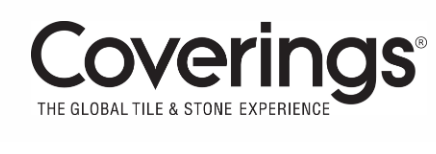Exploring Innovations in Exterior Ceramic Tile Design
 1.25 AIA LU/HSW; 1 IDCEC CEU/HSW; 0.1 ICC CEU; 0.1 IACET CEU*; 1 AIBD P-CE; AAA 1 Structured Learning Hour; This course can be self-reported to the AANB, as per their CE Guidelines; AAPEI 1 Structured Learning Hour; This course can be self-reported to the AIBC, as per their CE Guidelines.; MAA 1 Structured Learning Hour; This course can be self-reported to the NLAA.; This course can be self-reported to the NSAA; NWTAA 1 Structured Learning Hour; OAA 1 Learning Hour; SAA 1 Hour of Core Learning
1.25 AIA LU/HSW; 1 IDCEC CEU/HSW; 0.1 ICC CEU; 0.1 IACET CEU*; 1 AIBD P-CE; AAA 1 Structured Learning Hour; This course can be self-reported to the AANB, as per their CE Guidelines; AAPEI 1 Structured Learning Hour; This course can be self-reported to the AIBC, as per their CE Guidelines.; MAA 1 Structured Learning Hour; This course can be self-reported to the NLAA.; This course can be self-reported to the NSAA; NWTAA 1 Structured Learning Hour; OAA 1 Learning Hour; SAA 1 Hour of Core Learning
Learning Objectives:
- Explain the characteristics that make ceramic tile eco-friendly and provide health and safety for occupants.
- Discuss some of the looks and styles architects can achieve with ceramic tiles in outdoor applications.
- Describe the latest eco-friendly and healthy outdoor applications for gauged porcelain tile pavers (2cm and thicker) and gauged porcelain tiles and tile panels/slabs (as thin as 3.5mm).
- List new codes, standards, and certifications discussed in this article associated with ceramic tile’s contribution to healthy and green building.
This course is part of the Tile Academy
The Material Ingredient Guide provides the following:
- Guidance and data for manufacturers and specifiers to consider regarding ceramic tile, mortar, and grout material ingredient transparency
- A list of the ingredients most commonly used by North American manufacturers and references to in-depth chemical assessments of these ingredients
- Insights into satisfying green and healthy building criteria
Highlighted in TCNA’s Material Ingredient Guide are four steps toward material ingredient transparency: Inventory, Screening and Assessment, Disclosure, and Optimization. Following these steps can support ceramic tile, mortar, and grout manufacturer efforts in developing material ingredient reports that satisfy common A&D criteria, through which there is an opportunity for product contribution to green and healthy building rating programs.
Inventory: The Material Ingredient Guide provides in-depth instructions on developing a product content inventory, which is a product’s list of material ingredients and any substances that make up a material. Each of these material ingredients and substances is identified by a Chemical Abstract Service Registry Number (CASRN).
Screening and Assessment: Screening and assessment involve evaluating the toxicological profile associated with the individual CASRN identified for each material ingredient and substance within a product’s content inventory. The Material Ingredient Guide describes GreenScreen for Safer Chemicals as a market-accepted method for construction products as it is referenced by LEED, WELL Building, ILFI, and other green and healthy building programs. The Material Ingredient Guide assigns a GreenScreen Assessment benchmark (BM) score to each of the ingredients commonly used by North American ceramic tile, mortar, and/or grout manufacturers. Additionally, the Material Ingredient Guide states whether each ingredient is included in various “Red Lists” or “Restricted Substance Lists.”
Disclosure: The Material Ingredient Guide provides two widely accepted disclosure formats for manufacturers to follow when reporting material ingredients in their products: Health Product
Declarations (HPD) and Manufacturer Inventories (MI). The Material Ingredient Guide provides in-depth instructions and templates for manufacturers to follow when developing an HPD or MI. For both, a manufacturer must first have a product content inventory and a screening/assessment result for each material ingredient and substance included in the inventory. The Material Ingredient Guide’s GreenScreen Assessment BM scores for the ingredients common to ceramic tile, mortar, and grout, when disclosed, increase transparency. Also, an HPD or MI developed using this information qualifies for third-party verification, and a third-party verified HPD or MI with GreenScreen Assessment BM scores is highly credible and facilitates green and healthy building “optimization” by providing a high level of material ingredient transparency.
Optimization: Optimization involves selecting products with high levels of material ingredient transparency. Green and healthy building programs incentivize optimization by awarding points to projects that use products for which material ingredient information has been thoroughly inventoried, screened and assessed, and disclosed following steps such as those detailed in the Material Ingredient Guide.
TCNA’s Material Ingredient Guide facilitates more tile industry contribution to LEED and WELL optimization credits than any other industry due to having GreenScreen Assessments for over 75% of the reported ingredients in tile, mortar, and grout.
For more information on ceramic tile, mortar, and grout material ingredient transparency, refer to the TCNA Material Ingredient Guide, https://whytile.com/library/material-ingredient-guide/.
ANSI A138.1
This is a standard developed by the American National Standards Institute (ANSI) that establishes minimum criteria for the sustainability of ceramic tile products. It covers criteria related to raw materials sourcing, manufacturing processes, indoor air quality, and end-of-life management.
Embodied Carbon
Embodied carbon represents greenhouse gas emissions, released throughout the total life cycle of a product. Embodied carbon is reported as global warming potential (GWP) and expressed in carbon dioxide equivalents. Quantifying a product's embodied carbon requires LCA (Life Cycle Assessment). The results of the LCA are then reported through an EPD (environmental product declaration).
Some product EPDs report only on the production stage (Modules A1-A3) of the LCA, which provides a cradle-to-gate GWP. However, considering only modules A1-A3 does not reflect greenhouse gas emissions from maintenance, replacement, repair, refurbishment, or disposal during a building’s lifetime. When selecting a product based on embodied carbon, it is important to assess its cradle-to-grave GWP, which takes into account all life cycle stages (Modules A1-C4). GWP is the key factor used to determine a product’s embodied carbon. As discussed in section 1, when compared to UL Certified EPDs for other types of flooring developed under the 2018 North American Flooring Product Category Rule, UL 10010-7, ceramic tile has the lowest 75-year GWP value, meaning it also has the lowest cradle-to-grave embodied carbon.
CONCLUSION AND REVIEW
In this course, you have learned how ceramic tile’s characteristics lend themselves to exterior design projects. Its durability, flexibility, and aesthetic possibilities have been appreciated for centuries in architectural applications, but recent technologies and innovations have allowed ceramic tile to evolve with contemporary needs and desires. The expansion of available looks and styles and the advancements for ceramic pavers and panels open the door to a wide array of design possibilities—including biophilic design—while new codes and standards provide quality assurance. As the demand for sustainable and eco-friendly building materials increases, ceramic tile's natural composition and recyclability further position it as a reliable and environmentally friendly choice. Just as important, the hygienic, slip-resistant, fire-resistant, and non-toxic characteristics of ceramic tile support the health, safety, and well-being of those occupants enjoying outdoor spaces.
Erika Fredrickson is a writer/editor focusing on technology, environment, and history. She frequently contributes to continuing education courses and publications through Confluence Communications. www.confluencec.com






